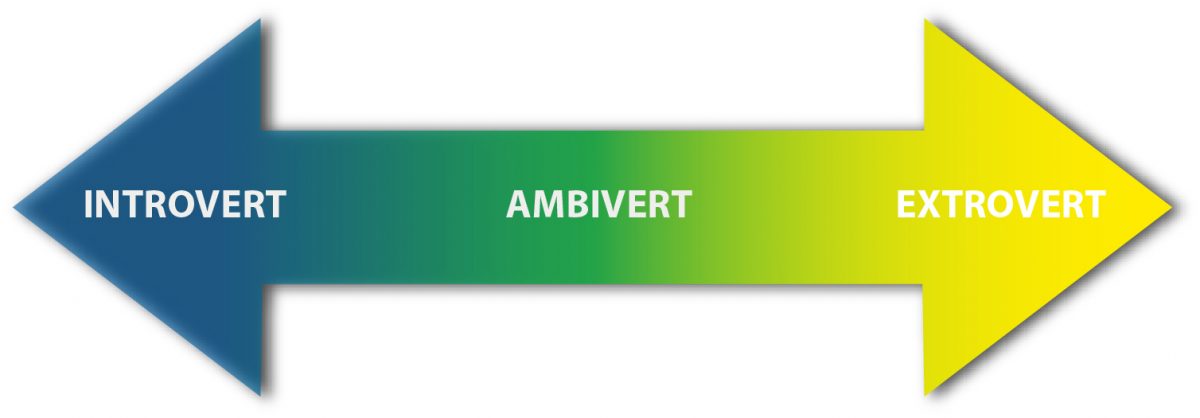
You've probably been asked before whether you're an introvert or an extrovert, but what if you don't lean heavily toward one or the other? If you have a hard time answering the question, chances are you fall on different points of the introvert to extrovert continuum depending on a number of factors.

Ambiverts are those who don't identify strongly as either introverts or extroverts, and they actually make up a majority of the population. Ambiverts are thought to have more versatile personalities that can more easily adapt to a given circumstance, and this adaptability helps them form bonds with a greater variety of personalities.
Understanding where you fall on the continuum allows you to better recognize your own strengths and weaknesses, and if you do identify as an ambivert, knowing when to lean in to your extroverted or introverted side can help you excel in a variety of circumstances. You may be an ambivert if:
- You enjoy deep conversations as much as you do introspective thinking.
- Too much time alone can be boring, but too much time around others can make you feel tired.
- You're not uncomfortable in a crowd, but too many social events can tire you out.
- When it comes to working alone or in a group, you don't have a preference.
- Being the center of attention can be fun, but you don't actively seek out this role.
If you related to the descriptions above, take advantage of your versatile personality by tuning in to your extroverted side in cases such as networking and tapping into your introverted side when thinking through problems.
You may also like

Why Does Fresh Snow Make NYC So Quiet?

Rocks Making Oxygen in Total Darkness

When Cheese Gets Interesting for Brain Health

What Happens If ACA Tax Credits End?

The Byheart Recall, Explained for Parents
